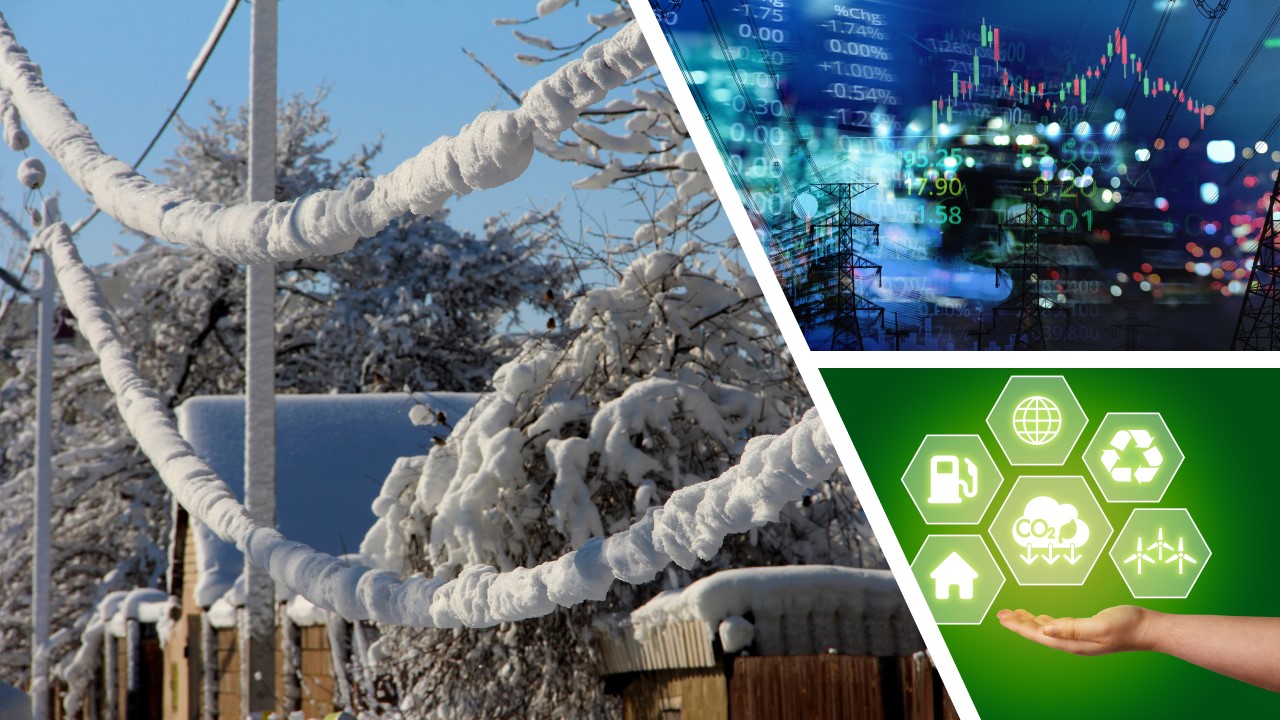
Rethinking Utilities’ Approach to Forecasting
Which of these is a good reason to deploy advanced, AI-powered models in energy forecasting?
- Navigating the increase in extreme weather events and intermittent generation.
- Responding to regulatory changes and shifts in energy market dynamics.
- Supporting short- and long-term load forecasts, trading decisions and integrated resource planning.

The short answer is: all of them. The International Energy Agency predicts a 30 percent increase in renewables by the end of this year and investment in US distributed energy resources (DERs) is projected to top $100 million and approach 400 gigawatts by 2026 – and this is only one piece of the puzzle that continues to add complexity and unpredictability to the energy market. Adopting an AI/ML approach to energy forecasting is shifting from attractive to essential.
In a paper focused on the impact of climate change on renewable energy production, M.A. Russo of Averio University and colleagues highlighted the challenges of “building a future where the foundation is a power source which is hard to predict and intermittent by nature.”1
Whether those challenges are underproduction, overproduction, energy losses or the inability to meet demand, “a clear and concise methodology with the most up-to-date data is required to study how to reach future targets, and accurately model the impact of climate change on renewable power generation.” That’s a sound view whether you are looking long-term, daily or down to the minute. But how to get there?
Harvesting a larger and deeper pool of data makes the difference. My colleague Jennifer Whaley, an expert on energy forecasting here at SAS, says the path is to start with the familiar naïve regression model but then enhance it with automation to improve it until a champion model is derived. This best-performing model can then be validated by the forecasting team and deployed.
Whaley says this AI-driven approach can drive mean absolute percentage errors below 2 percent. That translates to more confident decision-making, supported by data. This is a major differentiator of adopting an approach that embeds machine learning and AI into the forecasting process: The ability to automatically ingest massive volumes of variables from high-quality regional sources brings a level of refinement to forecasts that’s challenging to achieve using traditional methods.
Tamping down disparities between production and demand forecasts by feeding hundreds of variables into an AI-enhanced model helps take uncertainty out of the results of that modeling. Taking this low-error forecasting method onto the cloud adds further advantages, from cost considerations to scalability to access for a multiplicity of stakeholders throughout the utility, which ultimately drives innovation. It also gives utilities an opportunity to focus IT resources where they are needed most while circumventing the supply shortage – and hefty salaries – of data scientist resources.
To learn more, check out the IDC Spotlight Advanced AI-Powered Energy Forecasting in the SAS Analytic Insights Community (must be logged in to access).
SAS is a Premier Solution Provider for Utility Analytics Institute.
References:
- Russo, M.A. & Carvalho, David & Martins, N. & Monteiro, Alexandra. (2022). Forecasting the inevitable: A review on the impacts of climate change on renewable energy resources. Sustainable Energy Technologies and Assessments. 52. 102283. 10.1016/j.seta.2022.102283. (https://www.sciencedirect.com/science/article/pii/S2213138822003356).
About the author:
Ian Jones has been involved in the energy industry since Order 888. With a specialization in energy commodity risk and emissions/climate issues, he has helped the utility industry connect with the right SAS analytic strategies for over a decade. Prior to joining SAS, he was senior editor of the trade journals The Risk Desk and Energy Boardroom and a contributor to Energy Metro Desk, Power Executive and related publications for Scudder Publishing.















